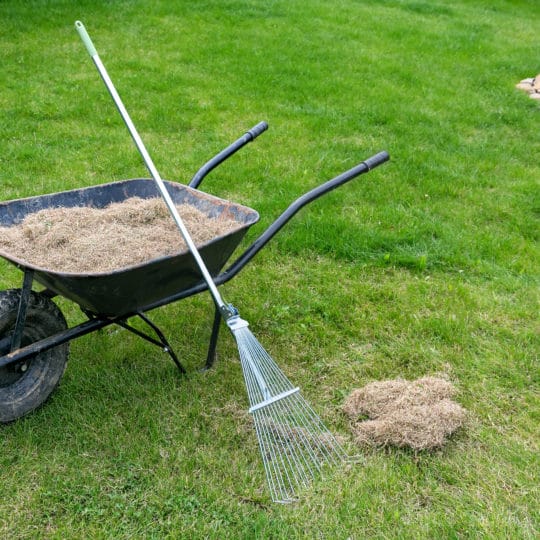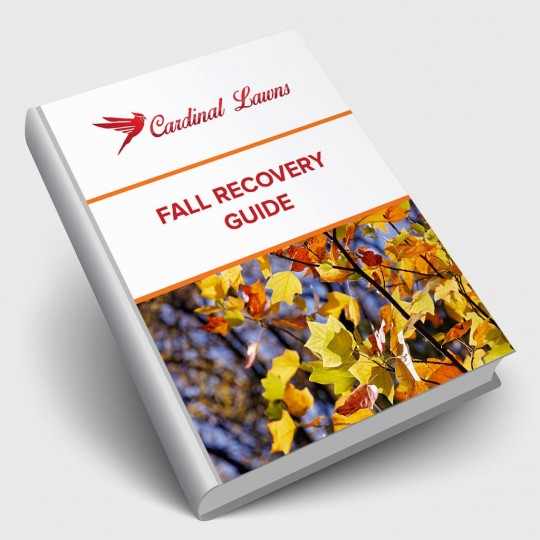Dethatching Your Lawn
Don’t Put Away the Rake
Posted
March 12, 2020

Fall is long gone, there are no leaves to rake, but you still want to stash this lawn tool somewhere easily accessible. It comes in handy while taking on another yard chore: dethatching your lawn.
What is Thatch
It sounds like it would be something woodsy and thick, a messy layer of jumbled roots and leaves. And that’s what thatch is. A mixed layer of debris from living and dead plants. You’ll find it at the base of grass where the roots and soil meet. Here are a few factors that lead to thatch:
- Grass type. Spreading grasses such as Kentucky bluegrass, Bermudagrass, and creeping fescues are known to need dethatching.
- Soil type. Compacted soil or a low pH level contribute to thatch.
- Overfertilization. Too much nitrogen isn’t good either. Try testing your soil to help ensure proper levels.
- Pesticides. Heavy use of certain products can harm your grass.
While a thin layer of thatch less than a half-inch thick acts as mulch and is good for plant health, a thick layer needs attention.
Dethatching Your Lawn
When the layer of debris exceeds an inch thick, it creates a barrier to water, light, and nutrients for the soil and roots. Roots that get tangled in thatch are more prone to heat and drought stress. Too much water is also an issue, as it can’t properly reach the roots. Often this leads to pest infestations and disease. Help prevent this from happening by dethatching your lawn.
Measure the thatch layer by digging up a small wedge of grass and soil. If it’s more than an inch, you’ve probably already noticed discolored, weak grass growth. This is just a confirmation to take action. However, you need to wait for the right time.
Dethatching should take place during the active growing season so that grass quickly recovers. For warm-season grasses, such as Bermudagrass or Zoysia, this is after spring into early summer. Cool-season grasses, such as Kentucky bluegrass, should be dethatched in late summer or early fall. Don’t do anything while your lawn is dormant or stressed from lack of water or heat.
How to Dethatch
Too much thatch—usually over two inches—can take more than one pass to remove. Removing too much at once puts extra stress on the roots. This is one reason why a professional should be called in to help with the process.
There are special rakes with short, heavy tines and curved blades to make dethatching easier. They dig into your lawn while pulling up the thatch, and are best for small projects. For a little more oomph, use a power rake. These mower-like devices have rotating tines to dig up a thin layer of thatch. Thicker thatch needs a vertical mower to slice through the layer and get to the soil.
No matter what option you choose, rake up all debris and thoroughly water your lawn when the job’s done. For heavily dethatched lawns, consider reseeding.
Thatch Prevention
Treating your lawn to regular maintenance helps to ensure it stays healthy all year. Here are a few ways to prevent future thatch issues:
- Test soil. Every few years, check the pH and nutrient levels of your soil to promote a healthy balance.
- Fertilization. Follow up your nutrient check with the right food for your grass.
- Aeration. Prevent soil compaction by aerating your lawn every year—especially in high traffic areas.
- Mowing. Keep your grass at the proper height.
Now that you know what to look out for, you’re one step closer to maintaining a healthy, lush lawn. Contact Cardinal Lawns for more information on dethatching methods and what other steps you can take to keep your yard looking its best.

Download Your FREE Fall Recovery Guide
Summer’s extreme conditions can take a toll on your grass and its health. Take some time to learn how to bring your lawn back to life. This handy guide teaches you what needs to be done for a full fall recovery.